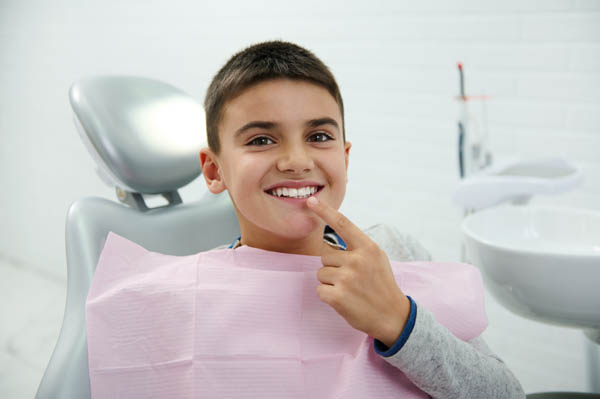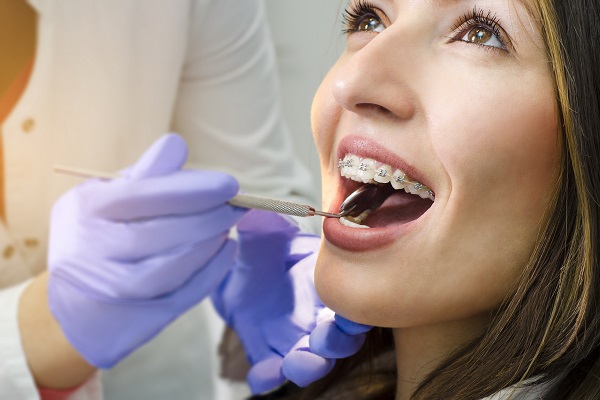Learn About Phase-One Early Orthodontic Treatment

Early orthodontic treatment is a great way to correct oral problems at a young age so they do not become worse later in life. While most parents are familiar with traditional orthodontic practices, not all of them are aware of what early orthodontic treatments entail. Generally speaking, the two are quite similar, but the goals of each and the way that the treatments are administered differ slightly.
Early orthodontic treatment is typically broken up into two different phases. The first of which is referred to as phase one: preventive, interception, and orthopedic treatment. It is important to understand how the first phase works in order to get an idea of what to expect from the entire process. Outlined here is an explanation of the first phase in early orthodontic treatment. This information can be especially helpful for parents to review when they are considering getting early orthodontic treatment for their child.
Phase one of early orthodontic treatment
Phase one of early orthodontic treatment typically starts when children are between the ages of six and eight or when all of their baby teeth have grown in. Phase one of treatment addresses early oral problems that may later turn into something serious if not addressed. Here are a few of the things that phase-one early orthodontic treatment addresses.
- It corrects bad oral habits, such as thumb sucking
- It establishes long-term stability and strength throughout the entire oral cavity
- It guides adult teeth into their proper positions
- It intercepts oral problems and prevents them from developing
- It fixes bite problems, which encourages better chewing
In short, phase one of early orthodontic treatment lays the foundation for future orthodontic procedures or treatment. This helps ensure that phase two is easier on the mouth as a whole, thus requiring less work on the teeth.
As children age, so do their teeth. This means that the teeth will become more rooted over time, which can make for a more uncomfortable orthodontic process. The more rooted the teeth are, the more work the orthodontic treatment will involve. There might be added pressure or force applied to each tooth, which might not be the most comfortable experience for the patient.
Benefits
Phase one of early orthodontic treatment can be quite beneficial for children who suffer from bite issues, crowding, or jaw malfunction. The benefits include a decreased likelihood that the child will need to undergo long-term treatment by a traditional orthodontist, a reduced risk that gum disease or cavities will form, a properly developed jaw that increases facial symmetry, and a lower chance of being injured as a result of a protruding tooth. Every child has varying needs, which means that each child will benefit differently from early orthodontic treatment.
Other important things to note
Early orthodontic treatment is not 100% required. However, orthodontists highly recommend it for the sake of the child's oral health and the development of their oral cavity. Many parents are hesitant to put their child through early orthodontic treatment because it starts at such a young age and the entire process can seem to be quite involved. However, it is important to know that the treatment will provide nothing but long-term benefits and better oral health.
When it comes to expectations for early orthodontic treatment, it is crucial to understand what exactly the treatment will entail. There will be several appointments at the start of the process, to ensure that the right approach is being taken. The orthodontist will perform many examinations of the mouth, including physical ones and X-rays. From there, fittings and moldings will be taken to ensure a precise and accurate approach.
Although it will be beneficial later, early orthodontic treatment does require a great deal of patience on the part of the child and their parents. Dental appointments cannot be skipped, or else the results become at risk of being skewed. Additionally, adjustments have to be made on a regular basis to match the progression.
Consult with an orthodontist
When looking to find out more about early orthodontic treatment and what phase one entails, it is best to consult directly with an orthodontist. An evaluation can be done, which will determine the appropriate course of action. Additionally, we would be happy to answer any questions or address any concerns that you may have. Please do reach out today to learn more or to get started with an appointment with our dentist.
Request an appointment here: https://www.brooklyn-orthodontist.com or call Brooklyn Heights Orthodontics: Susan Liebman, DMD at (718) 416-6368 for an appointment in our Brooklyn office.
Check out what others are saying about our dental services on Yelp: Orthodontics for Children in Brooklyn, NY.
Recent Posts
Searching for braces near me is often the first step toward achieving a healthier, more aligned smile. Braces can help correct a range of dental issues, including crooked teeth, bite problems, and jaw misalignment. Although treatment is typically performed by an orthodontist, general dentists play a crucial role in preparing patients for the process and…
Orthodontics can fix almost all teeth alignment issues. Poorly aligned teeth can ruin the way that your smile looks, and they can also leave you more vulnerable to a variety of oral issues, like tooth decay and gum disease, because it is harder to remove plaque from teeth surfaces. Improperly aligned teeth can also make…
Orthodontics help straighten improperly aligned teeth. Teeth alignment problems can ruin the appearance of your smile and leave your teeth more vulnerable to issues like tooth decay and gum disease.Orthodontics uses devices like braces and clear aligners to improve the alignment of teeth by gradually pushing them to better positions over time. Common teeth alignment…
Oral hygiene is vital when you are straightening your teeth with orthodontics. Oral appliances used to straighten teeth like braces and clear aligners can get in the way of oral hygiene. These appliances, braces in particular, can also increase your risk of oral issues like tooth decay.The oral appliances used to straighten teeth can increase…


